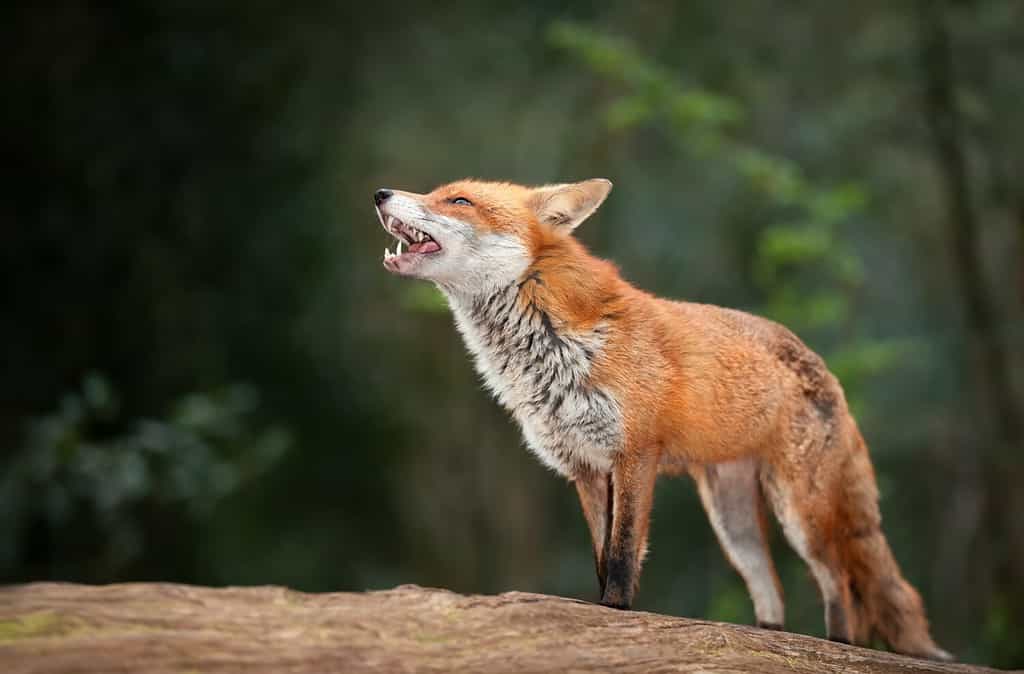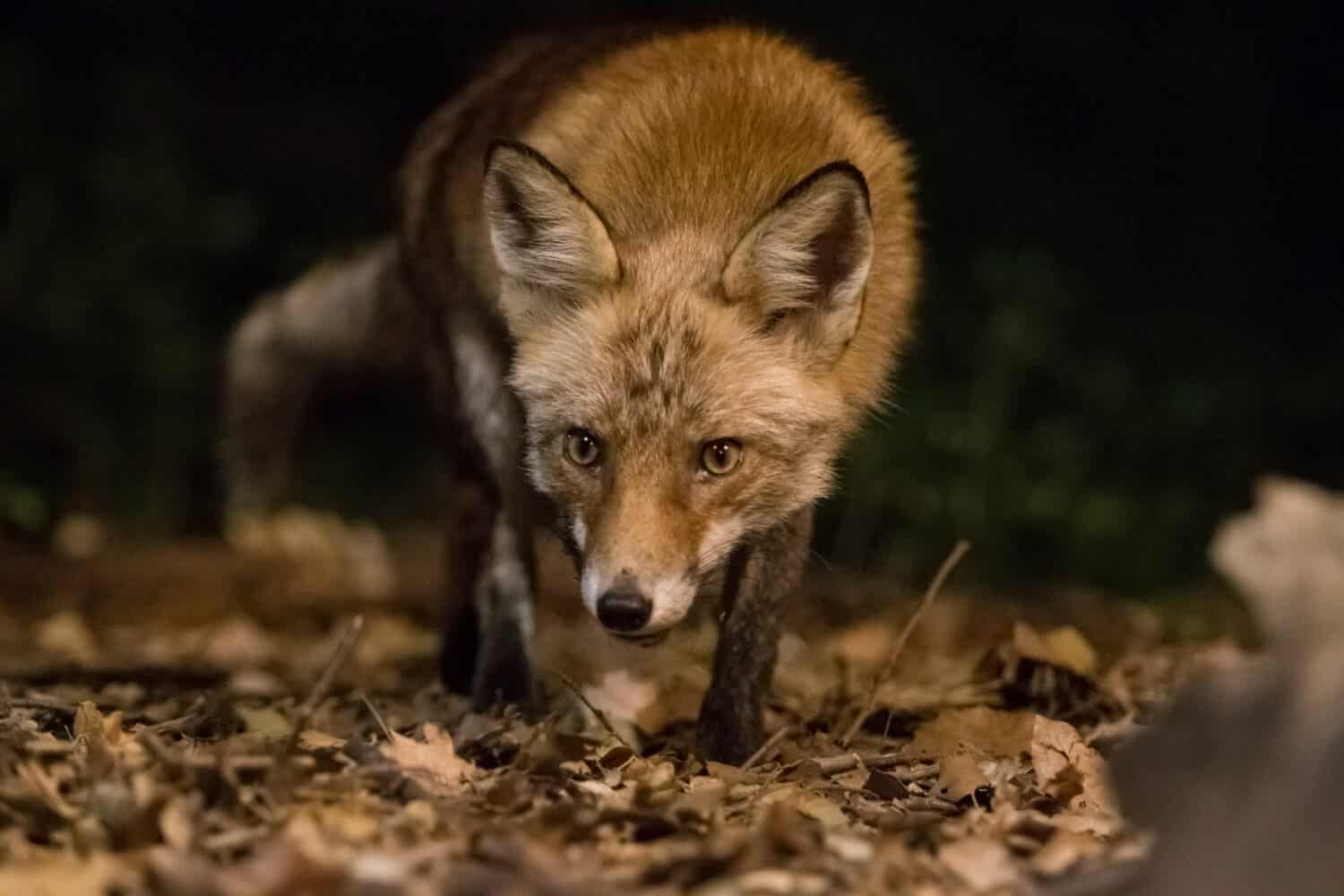Washington State is a biodiverse region with a wide array of flora and fauna, including various species of wildlife. Among these are foxes, which have captured the attention of many due to their unique behaviors and ecological roles. Washington is home to two different types of foxes, which we explore. In this article, we delve into the unique traits and behaviors of these two fox species. We also explore their ecological significance and conservation efforts. Join us as we embark on a journey to learn about the fascinating world of Washington State’s foxes!
There are at least two types of foxes that can be found in Washington. Though it is possible that other fox species exist in the area, these are the only two confirmed species.
Cascade Red Fox (Vulpes vulpes cascadensis)

The rare Cascade subspecies of red fox lives in the Cascade Mountains in Mount Rainier National Park.
©Tom Reichner/Shutterstock.com
The Cascade red fox (Vulpes vulpes cascadensis) is a native subspecies of red fox. This fox is an endangered subspecies, with most of its population found in the Eastern Cascades region. This includes Okanogan, Chelan, and Kittitas counties.
The Cascade red fox has a unique appearance, with distinctively small, round ears, a short snout, and darker, heavily furred feet. They prefer subalpine environments, such as rocky terrain and coniferous forests, and are typically solitary creatures.
The Cascade red fox, much like its red fox counterparts, has an opportunistic diet dictated by the availability of food. They tend to be solitary in nature, without forming large groups. These foxes exhibit similar behaviors to other red fox subspecies. For example, they use vocalizations and scent markings to communicate with other foxes in their territory. Their behavior is impacted by a range of factors, such as the availability of resources, predation threats, and seasonal changes.
Research is ongoing to determine their population size and range, as well as potential threats to their survival. You can report sightings of the Cascade red fox to the Washington Department of Fish and Wildlife using their online wildlife reporting form.
Red Fox (Vulpes vulpes)

The red fox is not native to Washington, but it was introduced and can be spotted throughout the state.
©Giedriius/Shutterstock.com
While the red fox (Vulpes vulpes) is not native to Washington State, it has been introduced. There is no specific information on its range, but they reside in the lowlands.
The red fox has a characteristic appearance that includes a pointed snout, triangular ears, and a bushy, white-tipped tail. Their fur is typically reddish-brown on the back and flanks, with white fur on the underside and mouth. The size and color of the red fox can vary depending on its geographic location and subspecies.
Red foxes are generally solitary animals and do not form packs like wolves. Adult foxes have home ranges that vary in size depending on the availability of food and other resources. They are opportunistic feeders, and their diet can be varied. It may include small mammals, such as rodents and rabbits, birds, insects, and fruits.
Red foxes have keen senses and are agile runners and climbers, allowing them to move quickly through forested areas. They also use a range of vocalizations and scent markings to communicate with other foxes in their territory.
Summary Of Similarities and Differences Between the Cascade Red Fox and the Red Fox
Below is a summary of the similarities and differences between the Cascade red fox and the red fox:
Similarities:
- Both the Cascade red fox and the red fox belong to the same species, Vulpes vulpes.
- They are both opportunistic feeders whose diets can vary depending on the availability of food.
- Both use a range of vocalizations and scent markings to communicate with other foxes in their territory.
- Many factors influence their behavior, such as the availability of resources, predation threats, and seasonal changes.
Differences:
- While the red fox is widely distributed across many regions, the Cascade red fox is native to the Eastern Cascades region.
- The Cascade red fox is slightly smaller in size.
- The Cascade red fox primarily occupies alpine and subalpine habitats, while the red fox can live in a wider range of habitats.
- The Cascade red fox is a distinct subspecies with unique genetics and morphology, while the red fox is more genetically diverse and has a broader range of morphologies.
The Role of Foxes in Washington Ecosystems
Research does not provide comprehensive information on the role of foxes in Washington ecosystems. However, studies suggest that foxes may play important roles in ecosystem stability, function, and structure.
For example, one study mentioned the importance of foxes in monitoring ecosystem health and stability. Another study explored the idea of foxes as surrogate seed dispersers, highlighting their potential role in maintaining ecosystem functions. Additionally, a study on red foxes near the Arctic tree line found that they can enhance long-term tree growth, illustrating their potential impact on ecosystem structure.
Washington Fox Populations: Current Status and Conservation Efforts
We need more research and conservation efforts to determine the current status and threats facing Washington fox populations, particularly the Cascade red fox.
For example, the Cascade red fox is a Washington Candidate Species and a State Endangered Candidate Species. Its conservation and management efforts are complicated by its similarity in appearance to lowland red foxes. Genetic studies have distinguished the two.
The Washington Department of Fish & Wildlife recommends periodic field surveys to assess the occupancy trends and threat status of Cascade red fox populations and to continue efforts to find resident populations.
Thank you for reading! Have some feedback for us? Contact the AZ Animals editorial team.








